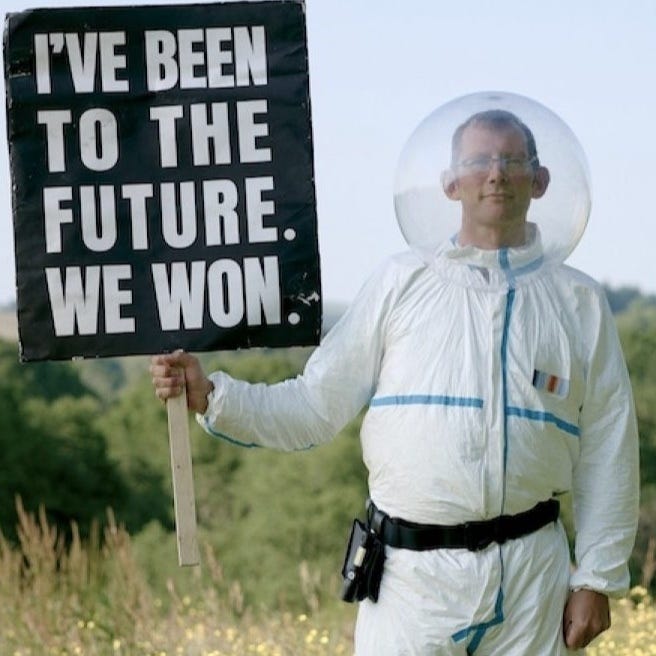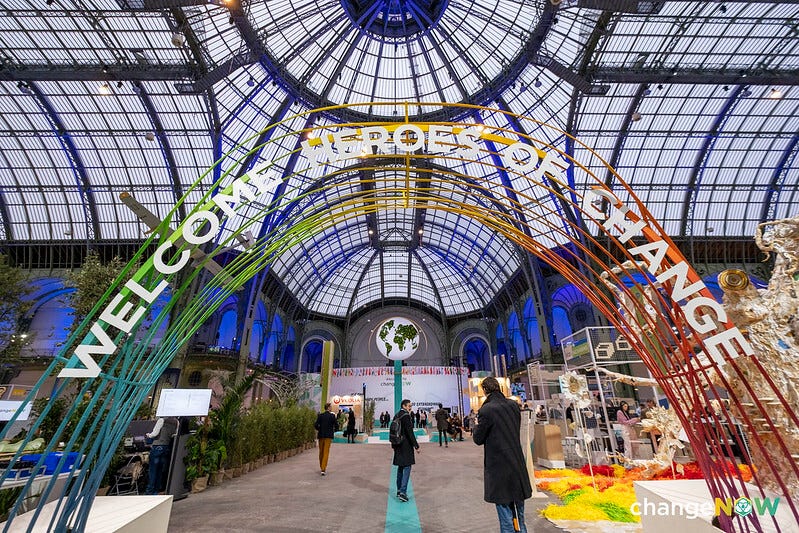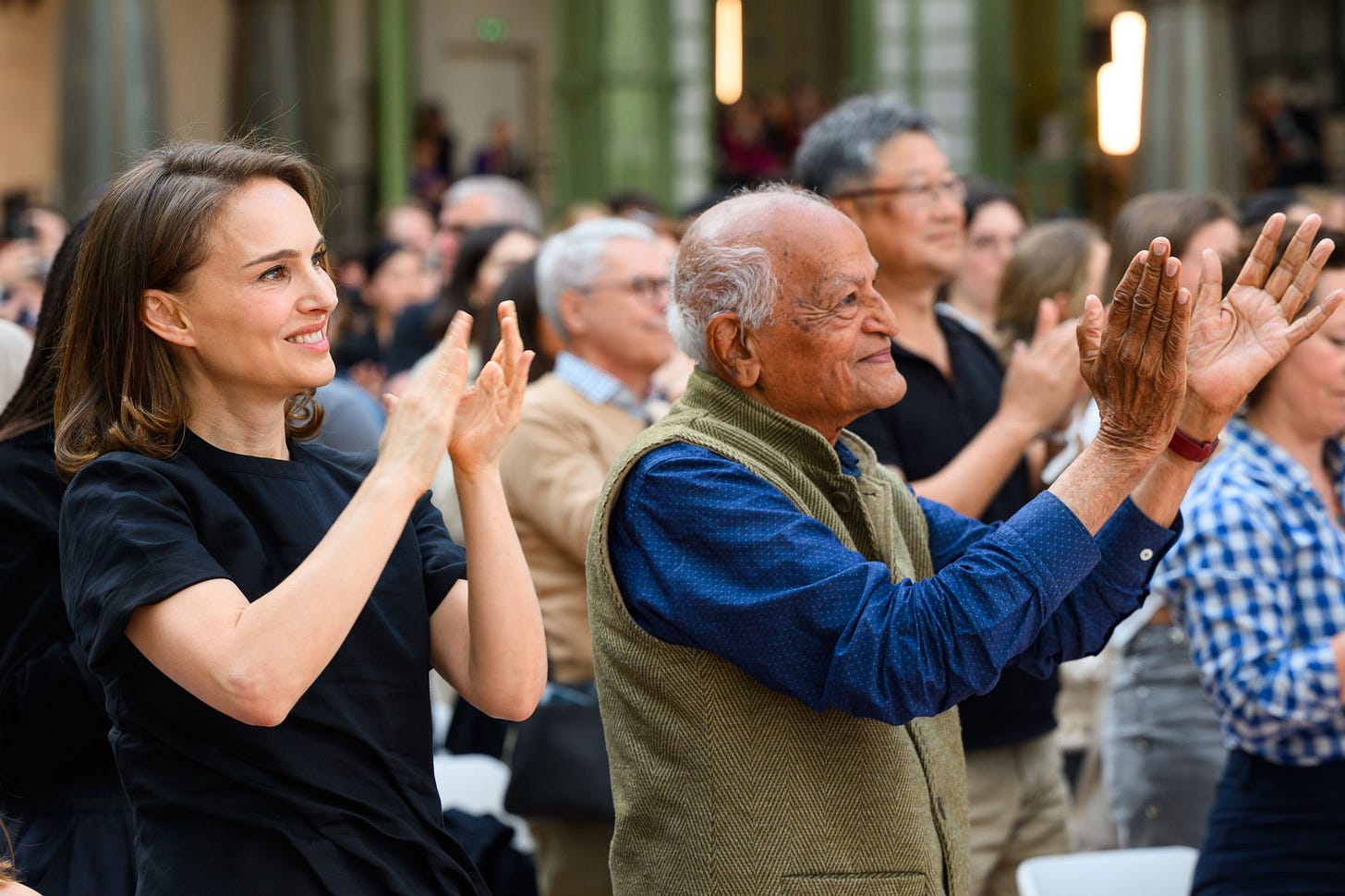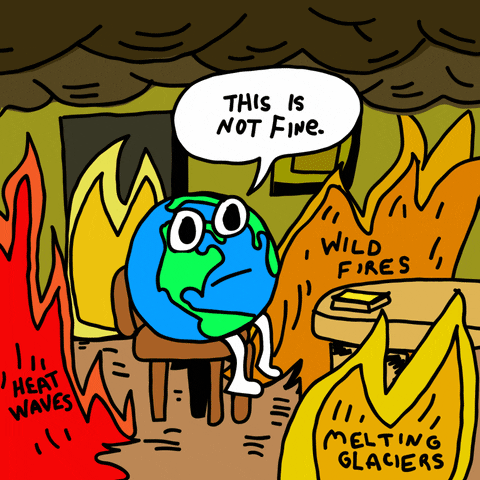I've been to the future. We won.
Lessons from the biggest conference of climate solutions in the world
This year, tens of thousands of people gathered in the iconic Grand Palais in Paris for the 8th annual ChangeNOW conference. The program was replete with decorated speakers like Mary Robinson, the first female president of Ireland; Patricia Espinosa, former UN Climate Chief; Imane Khelif, Olympic champion boxer; and Academy-Award-winning actress Natalie Portman.
More impressive than the speakers, however, were the rows of companies exhibiting their innovative solutions to climate issues. Spanning a range of topics from biodiversity preservation to waste management, the conference showcased at least 1,000 of them, making it the largest event of climate solutions in the world.
This was my second time attending ChangeNOW, and my first not attending as a student. Despite the recent trending decrease in interest in sustainability-related topics in countries like the U.S, a sense of hope permeated the event. It’s difficult not to feel hopeful, after all, when surrounded by thousands of likeminded people willing to make an effort to combat the pending catastrophe.
To my delight, I found several art and media-related subjects on the program. L’Oreal, the 4th largest advertiser in the world, held a session on their efforts to decarbonize their media and change consumer habits. The president of the New York Times opened for a panel of professors and CEOs discussing where climate messaging has fallen short and how to fix it. The Chief Sustainability Officer of Netflix chatted with producers and actors about the global shift toward sustainability in the film industry.
Some points that resonated with me this year echoed ideas I had already intuited and reinforced my belief in the power of media and art to make a significative difference in the fight to protect our environment.
Never lead with sustainability
The frustrating but undeniable truth is that the sustainability value proposition does not work on many, if not most, consumers. Again and again, I heard speakers talk about the importance of co-benefits when convincing those who aren’t already onboard to adopt sustainable habits or make decisions that are better for the planet.
L’Oreal said they had to emphasize the cost savings and convenience of product refills over their smaller environmental footprint to engage customers. The CEO of ENVIRAL, a communications agency, reluctantly brought up Musk’s pitch when first talking to investors for Tesla. He said he wanted to make the most luxurious car in the world. Not a mention of sustainability.
Even a Channel 4 documentary about rewilding in Cumbria led with things like job creation and the resuscitation of the community rather than the environmental benefits of the project. By doing so, they’re able to build support and engagement amongst those who don’t consider sustainability their top priority.
The lesson? Whatever your project is, highlight other value-adds like cost reductions, convenience, health benefits, or even luxury. Create a win-win-win situation where your sustainable solution is appealing to people’s values and needs and, oh, by the way, it’s also good for the planet.
The climate crisis is a failure of the imagination
This idea came up during a talk on rethinking our economic system to put justice and equity front and center. The Chief Economist of Triodos Bank, probably the greenest bank in the world, and the co-founder of the Transition Network both agreed that any strategy that doesn’t seem ridiculous enough is not ambitious enough.
The Director of the Hot and Cool Institute, who opened for them, presented from the 2050s and laid out all the actions taken from the 2020s to get to that point. “We are in a competition to shape the future,” he said as he was wrapping up. The political right is currently the dark horse in this competition, but does it present a hopeful vision of the future to its followers?

It’s an idea very reminiscent of my recent article series on the Solarpunk movement. In it, I explored the need for stories about a future where things go right. Not only can they be a guiding light in times of despair and anxiety, but they’re a creative playground in which to explore solutions and drawbacks of certain ideas or technologies. This includes new models of financial systems and forms of government. They’re all stories we tell ourselves, after all. Stories that can change.
Not only is imagination critical to even attempt radical change, it’s also in danger. The attention economy is colonizing every minute of consciousness of our day and preventing us from being bored, a.k.a having time to think and come up with imaginative ideas.
We must now conceptualize imagination as a radical act. Because it is.
Paging all translators and storytellers
We’ve been tricked into believing that supporting climate action is a minority position. Someone during the conference mentioned a survey that showed that while over 80% of participants supported immediate action, when asked how many people agree they thought agreed, they estimated that only 40% did.
This is a PR crisis. We need to stop relying on scientists for climate communication and be more strategic. Whether this means bringing in professional PR and branding agencies or platforming activists who can translate between those in the negotiation rooms and those on the ground, approaches need to be tailored in order to get the messaging across.
Know your audience. Find trusted spokespeople. Use visuals, graphics, and audio whenever possible to make the information more accessible. The same narratives that convinced the early adopters to join the movement will not work on the early majority. We need new, unexpected stories to appeal to new segments of the population.
If you’re a creator, make a compelling story first and foremost, then pepper it with environmental topics. As I explained before, leading with “this is a sustainability story” just doesn’t work to capture the attention of most audiences. Important ideas can be wrapped up in genre stories (true crime, sci-fi, etc.) and presented to audiences like a Trojan Horse. It comes down to meeting people where they’re at.
And even if you’re not a creator, don’t think this has nothing to do with you. Climate disinformation is on the rise, and it will only worsen with the proliferation of AI-generated content on the internet. We all need to do our part when it comes to climate communication. People trust those they know most, so never underestimate your own influence as a translator and storyteller on those around you.
And much more…
One analysis presented at ChangeNOW estimated that climate coverage in the media had decreased by 30% from 2023 to 2024 in France.
The hostile environment in the U.S and shifting priorities for other countries might further reduce this number worldwide in 2025. However, the benefits of environmental actions are undeniable. They improve public health, provide massive economic opportunities, and can reinvigorate communities.
This is not time to walk back our commitments to our planet. It’s time to rephrase them. Here are a few other important points that were repeated throughout the three-day event:
Narratives in media should be consistent with the reality of the world. At this point, two-thirds of the global population have experience climate change first-hand. Creators are writing from their lived experiences. Audiences expect this to be reflected on screen.
Messaging needs to be solutions-focused, not dystopian. Move away from fear-based messaging. Give people concrete examples of actions they can take locally and make sure that information is easy to find. A good example is the NYT’s 50 fixes for 50 states series.
Sustainability needs to work on desirability and being aspirational. Just like Silicon Valley gave tech entrepreneurship a veneer of sexiness, we must do the same for climate innovators. Maybe then, others will aspire to be like them and flock to the space. This has to become the new cool. #MakeSustainabilitySexy
Art is as important as ever in teaching people how to live in peace and harmony. I will dive deeper into this in my article next week.
All in all, I left the conference feeling hopeful and inspired. Almost a week later, I’m still processing many of the ideas discussed. I’ll leave you with one. Ask what’s good, not what’s better. The latter will always leave you unsatisfied.









